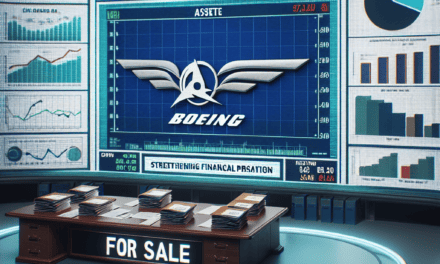“Solar Sector Shaken: Enphase Leads Decline as Earnings Disappoint, Impacting Sunrun and SolarEdge”
Introduction
Enphase Energy, a prominent player in the solar technology sector, recently experienced a significant decline in its stock value following an earnings report that fell short of market expectations. This downturn has not only impacted Enphase but has also reverberated across the solar industry, affecting other major companies such as Sunrun and SolarEdge. The disappointing earnings report has highlighted broader challenges within the solar sector, including fluctuating demand, supply chain disruptions, and competitive pressures, which have collectively contributed to a volatile market environment. As investors reassess their positions, the ripple effects of Enphase’s earnings miss underscore the interconnected nature of the solar industry and the ongoing struggles faced by companies striving to maintain growth and profitability in a rapidly evolving energy landscape.
Enphase Stock Decline: Analyzing the Impact of Earnings Miss
Enphase Energy, a prominent player in the solar energy sector, recently experienced a significant decline in its stock value following an earnings report that fell short of market expectations. This downturn has not only affected Enphase but has also sent ripples through the broader solar industry, impacting companies like Sunrun and SolarEdge. The disappointing earnings report from Enphase has raised concerns among investors and analysts, prompting a closer examination of the factors contributing to this decline and its implications for the solar sector as a whole.
The primary catalyst for the drop in Enphase’s stock was its quarterly earnings report, which revealed lower-than-expected revenue and profit margins. Despite the company’s efforts to expand its market presence and enhance its product offerings, it faced challenges such as supply chain disruptions and increased competition. These issues have hindered Enphase’s ability to meet the high expectations set by analysts and investors, leading to a sharp sell-off in its shares. The company’s performance has been further exacerbated by macroeconomic factors, including rising interest rates and inflationary pressures, which have increased operational costs and squeezed profit margins.
As Enphase’s stock plummeted, the impact was felt across the solar industry, with companies like Sunrun and SolarEdge also experiencing declines in their stock prices. This sector-wide downturn highlights the interconnected nature of the solar industry, where the performance of one major player can influence investor sentiment and market dynamics for others. Sunrun, a leading residential solar provider, and SolarEdge, a key supplier of solar inverters, both faced investor scrutiny as concerns about the overall health of the solar market intensified. The challenges faced by Enphase have raised questions about the sustainability of growth in the solar sector, particularly in the face of economic headwinds and evolving regulatory landscapes.
Despite these challenges, the long-term outlook for the solar industry remains positive, driven by the global push towards renewable energy and the increasing adoption of solar technology. Governments worldwide continue to implement policies and incentives to promote clean energy, which bodes well for the future growth of solar companies. However, in the short term, companies like Enphase, Sunrun, and SolarEdge must navigate a complex landscape characterized by supply chain constraints, fluctuating demand, and competitive pressures. To regain investor confidence, these companies will need to demonstrate resilience and adaptability in addressing these challenges while continuing to innovate and expand their market reach.
In conclusion, the recent decline in Enphase’s stock following its earnings miss has underscored the volatility and interconnectedness of the solar industry. While the immediate impact has been negative, affecting not only Enphase but also other key players like Sunrun and SolarEdge, the long-term prospects for the sector remain promising. As the world continues to transition towards renewable energy, solar companies have a critical role to play in shaping a sustainable future. However, to capitalize on these opportunities, they must effectively manage current challenges and position themselves for growth in an increasingly competitive and dynamic market. The coming months will be crucial for Enphase and its peers as they strive to stabilize their operations and reassure investors of their ability to thrive in the evolving energy landscape.
Sunrun’s Market Reaction to Sector-Wide Challenges
The solar energy sector, once a beacon of hope for sustainable energy enthusiasts and investors alike, has recently faced significant challenges, as evidenced by the recent downturn in stock prices of major players like Enphase Energy, Sunrun, and SolarEdge. The catalyst for this decline was Enphase Energy’s disappointing earnings report, which sent ripples throughout the industry, affecting not only its own stock but also those of its competitors. This development has raised concerns about the broader market dynamics and the future prospects of solar energy companies.
Enphase Energy, a leading provider of solar microinverters, reported earnings that fell short of analysts’ expectations, citing supply chain disruptions and increased costs as primary factors. This earnings miss was a stark reminder of the vulnerabilities that even well-established companies face in the current economic climate. The immediate market reaction was a sharp decline in Enphase’s stock price, which subsequently influenced investor sentiment across the solar sector. As a result, Sunrun, a prominent residential solar company, also experienced a notable drop in its stock value.
Sunrun’s market reaction can be attributed to several interconnected factors. Firstly, the solar industry is highly interdependent, with companies often sharing suppliers and facing similar regulatory challenges. Therefore, when a major player like Enphase reports difficulties, it raises concerns about the operational health of other companies within the sector. Investors, wary of potential contagion effects, may choose to divest from solar stocks, leading to a broader market sell-off.
Moreover, Sunrun’s own financial performance and strategic positioning have come under scrutiny. While the company has been a leader in residential solar installations, it faces its own set of challenges, including fluctuating demand, evolving government policies, and the need for continuous innovation to maintain its competitive edge. The recent downturn in Enphase’s stock has only intensified these concerns, prompting investors to reassess Sunrun’s growth prospects in an increasingly volatile market.
In addition to these industry-specific issues, macroeconomic factors have also played a role in shaping investor sentiment. Rising interest rates and inflationary pressures have increased the cost of capital, making it more expensive for solar companies to finance new projects and expand their operations. This has further dampened investor enthusiasm, as the potential for reduced profitability looms large over the sector.
Despite these challenges, it is important to recognize the long-term potential of solar energy. The global push towards renewable energy sources remains strong, driven by the urgent need to combat climate change and reduce carbon emissions. Governments worldwide continue to implement policies and incentives to support the growth of solar energy, which could provide a much-needed boost to companies like Sunrun in the future.
In conclusion, while the recent earnings miss by Enphase Energy has undoubtedly cast a shadow over the solar sector, it is crucial to view this development within the broader context of industry dynamics and macroeconomic conditions. Sunrun, along with its peers, must navigate these challenges with strategic foresight and adaptability. As the world transitions towards a more sustainable energy future, the solar industry will likely continue to play a pivotal role, albeit with the need for resilience and innovation to overcome the hurdles it currently faces.
SolarEdge’s Performance Amidst Industry Struggles
The solar energy sector, a beacon of hope for sustainable energy solutions, has recently faced significant challenges, as evidenced by the recent downturn in stock prices for major players like Enphase Energy, Sunrun, and SolarEdge Technologies. Enphase Energy, a leader in microinverter technology, recently reported earnings that fell short of market expectations, triggering a sharp decline in its stock value. This earnings miss has not only impacted Enphase but has also sent ripples throughout the solar industry, affecting other companies such as Sunrun and SolarEdge, which are grappling with their own set of challenges.
Enphase’s disappointing earnings report highlighted several issues plaguing the solar sector, including supply chain disruptions, fluctuating raw material costs, and changing regulatory landscapes. These factors have collectively contributed to increased operational costs and squeezed profit margins, making it difficult for companies to meet investor expectations. As a result, Enphase’s stock plummeted, reflecting investor concerns about the company’s ability to navigate these turbulent waters.
In the wake of Enphase’s struggles, Sunrun, a prominent residential solar company, has also experienced a decline in its stock value. Sunrun’s challenges are emblematic of broader industry issues, such as rising interest rates, which have made financing solar projects more expensive. Additionally, the company faces stiff competition from other renewable energy sources, which are becoming increasingly cost-competitive. These factors have compounded the difficulties for Sunrun, leading to a cautious outlook from investors.
Amidst these industry-wide struggles, SolarEdge Technologies, a key player in the solar inverter market, has also been affected. While SolarEdge has managed to maintain a relatively stable position compared to its peers, it is not immune to the challenges facing the sector. The company has been navigating supply chain constraints and increased competition, which have put pressure on its profit margins. Despite these hurdles, SolarEdge has continued to innovate, focusing on expanding its product offerings and exploring new markets to sustain growth.
The interconnected nature of the solar industry means that the challenges faced by one company can have a cascading effect on others. As Enphase, Sunrun, and SolarEdge grapple with these issues, the entire sector is under scrutiny from investors who are increasingly cautious about the future prospects of solar energy companies. This caution is further exacerbated by the broader economic environment, which includes concerns about inflation and potential changes in government policies that could impact renewable energy incentives.
In response to these challenges, companies within the solar sector are exploring various strategies to mitigate risks and stabilize their operations. These strategies include diversifying supply chains, investing in research and development to improve efficiency, and seeking strategic partnerships to enhance market presence. By adopting these measures, solar companies aim to strengthen their resilience and position themselves for long-term success in an increasingly competitive energy landscape.
In conclusion, the recent struggles of Enphase Energy, Sunrun, and SolarEdge Technologies underscore the complex challenges facing the solar industry. While these companies are working diligently to address these issues, the path forward remains fraught with uncertainty. As the sector continues to evolve, the ability of these companies to adapt and innovate will be crucial in determining their future success and the overall trajectory of the solar energy market.
Factors Contributing to Enphase’s Earnings Shortfall

Enphase Energy, a prominent player in the solar energy sector, recently experienced a significant decline in its stock value following an earnings report that fell short of market expectations. This downturn not only affected Enphase but also had a ripple effect on other companies within the solar industry, including Sunrun and SolarEdge. Several factors contributed to Enphase’s earnings shortfall, which in turn has raised concerns about the broader challenges facing the solar sector.
One of the primary factors contributing to Enphase’s disappointing earnings is the fluctuating demand for solar products. While the global push for renewable energy has generally bolstered the solar industry, recent economic uncertainties have led to a more cautious approach from consumers and businesses alike. Inflationary pressures and rising interest rates have made financing solar projects more expensive, causing some potential customers to delay or reconsider their investments in solar technology. This hesitancy has directly impacted Enphase’s sales figures, as the company relies heavily on a steady stream of new installations to drive revenue growth.
In addition to demand fluctuations, supply chain disruptions have also played a significant role in Enphase’s earnings miss. The solar industry, like many others, has been grappling with supply chain challenges that have persisted since the onset of the COVID-19 pandemic. Shortages of critical components, such as semiconductors and other electronic parts, have led to production delays and increased costs for manufacturers. Enphase, which specializes in microinverters and energy management technology, has been particularly affected by these shortages, as its products are highly dependent on the availability of these components. Consequently, the company has faced difficulties in meeting production targets and fulfilling customer orders on time.
Moreover, the competitive landscape within the solar industry has intensified, adding further pressure on Enphase’s financial performance. As more companies enter the market, the competition for market share has become fiercer, leading to pricing pressures and reduced profit margins. Enphase, while maintaining a strong position in the industry, has had to navigate this increasingly competitive environment, which has affected its ability to achieve the profit levels anticipated by investors.
Furthermore, regulatory and policy changes have also contributed to the challenges faced by Enphase and the solar sector as a whole. In some regions, changes in government incentives and subsidies for solar energy have created uncertainty, impacting the financial viability of solar projects. For instance, alterations in net metering policies or reductions in tax credits can significantly affect the return on investment for solar installations, thereby influencing consumer decisions. Enphase, operating in multiple markets, must continuously adapt to these regulatory shifts, which can be both time-consuming and costly.
In light of these factors, Enphase’s recent earnings shortfall underscores the complex and multifaceted challenges currently facing the solar industry. While the long-term outlook for renewable energy remains positive, companies like Enphase must navigate a landscape marked by economic volatility, supply chain disruptions, competitive pressures, and regulatory uncertainties. As the sector continues to evolve, stakeholders will need to remain vigilant and adaptable to ensure sustained growth and success in the pursuit of a more sustainable energy future.
Broader Implications for the Solar Energy Sector
The recent downturn in Enphase Energy’s stock, following an unexpected earnings miss, has sent ripples throughout the solar energy sector, affecting major players like Sunrun and SolarEdge. This development raises broader implications for the solar industry, which has been navigating a complex landscape of fluctuating demand, regulatory changes, and technological advancements. As Enphase’s stock plummeted, investors were prompted to reassess their positions not only in Enphase but also in other solar companies, leading to a sector-wide reevaluation.
The solar energy sector has been under pressure due to a combination of factors, including supply chain disruptions and increased competition. Enphase’s earnings miss highlights the challenges companies face in maintaining profitability amidst these headwinds. The company’s inability to meet market expectations has sparked concerns about the sustainability of growth in the solar sector, especially as it grapples with the rising costs of raw materials and logistical hurdles. Consequently, this has led to a broader market reaction, with Sunrun and SolarEdge also experiencing declines in their stock prices.
Moreover, the situation underscores the interconnectedness of companies within the solar industry. As Enphase struggles, its challenges reverberate through the sector, affecting suppliers, partners, and competitors alike. This interconnectedness is a double-edged sword; while it can drive innovation and collaboration, it also means that setbacks for one company can have cascading effects on others. The recent stock declines serve as a reminder of the volatility inherent in the solar market, where companies are often at the mercy of external factors beyond their control.
In addition to market dynamics, regulatory changes continue to play a significant role in shaping the solar energy landscape. Governments worldwide are increasingly focusing on renewable energy policies, which can either bolster or hinder the growth of solar companies. For instance, changes in tax incentives or tariffs can have immediate impacts on the financial performance of solar firms. As such, companies like Enphase, Sunrun, and SolarEdge must remain agile and responsive to policy shifts to maintain their competitive edge.
Technological advancements also present both opportunities and challenges for the solar sector. While innovation can lead to more efficient and cost-effective solutions, it also requires significant investment in research and development. Companies must balance the need to innovate with the financial realities of operating in a competitive market. Enphase’s recent struggles may prompt a reevaluation of investment strategies across the sector, as firms seek to optimize their technological offerings while managing costs.
Looking ahead, the solar energy sector must navigate these multifaceted challenges to sustain its growth trajectory. The recent stock declines serve as a wake-up call for companies to reassess their strategies and adapt to the evolving market conditions. While the path forward may be fraught with obstacles, the long-term prospects for solar energy remain promising, driven by the global push towards sustainable energy solutions.
In conclusion, the recent earnings miss by Enphase Energy and its subsequent impact on the broader solar sector highlight the complexities and interdependencies within the industry. As companies like Sunrun and SolarEdge also feel the effects, it becomes clear that the solar market is at a critical juncture. Navigating this landscape will require strategic foresight, adaptability, and a commitment to innovation, as the sector continues to play a pivotal role in the transition to a more sustainable energy future.
Investor Sentiment in Renewable Energy Stocks
The renewable energy sector, once a beacon of hope for investors seeking sustainable growth, has recently faced significant challenges, as evidenced by the recent downturn in Enphase Energy’s stock. Enphase, a leading provider of solar microinverters, experienced a sharp decline in its stock price following an earnings report that fell short of market expectations. This disappointing performance has not only affected Enphase but has also sent ripples throughout the renewable energy sector, impacting other major players such as Sunrun and SolarEdge.
The earnings miss by Enphase can be attributed to several factors, including supply chain disruptions and increased competition in the solar energy market. These challenges have led to higher operational costs and squeezed profit margins, making it difficult for the company to meet the optimistic forecasts set by analysts. As a result, investor sentiment has soured, leading to a sell-off in Enphase shares. This decline has been exacerbated by broader market conditions, where rising interest rates and economic uncertainties have made investors more risk-averse, particularly in sectors perceived as volatile.
Sunrun, another prominent player in the solar industry, has not been immune to these challenges. As the largest residential solar company in the United States, Sunrun has faced its own set of hurdles, including regulatory changes and fluctuating demand for solar installations. The negative sentiment surrounding Enphase has spilled over to Sunrun, as investors reassess the risks associated with investing in solar energy companies. Consequently, Sunrun’s stock has also experienced a decline, reflecting the broader apprehension in the market.
Similarly, SolarEdge Technologies, a key competitor of Enphase, has felt the impact of the sector’s struggles. While SolarEdge has managed to maintain a strong market position through its diversified product offerings, it has not been entirely shielded from the challenges facing the industry. The company’s stock has seen fluctuations as investors weigh the potential for future growth against the current headwinds. The interconnected nature of the solar industry means that the performance of one company can significantly influence investor perceptions of others, leading to a cascading effect across the sector.
Despite these setbacks, it is important to recognize the long-term potential of renewable energy stocks. The global push towards sustainable energy solutions remains a powerful driver for growth, with governments and corporations alike committing to ambitious carbon reduction targets. This underlying demand for clean energy provides a solid foundation for companies like Enphase, Sunrun, and SolarEdge to recover and thrive in the future. However, in the short term, these companies must navigate the challenges posed by market volatility and operational hurdles.
In conclusion, the recent decline in Enphase’s stock, along with the subsequent impact on Sunrun and SolarEdge, highlights the current struggles within the renewable energy sector. While investor sentiment has been negatively affected by earnings misses and broader economic uncertainties, the long-term outlook for renewable energy remains promising. As the industry continues to evolve, companies will need to adapt to changing market conditions and leverage technological advancements to maintain their competitive edge. For investors, this period of volatility may present both challenges and opportunities, underscoring the importance of a strategic approach to investing in renewable energy stocks.
Future Outlook for Enphase and Competitors in a Volatile Market
The recent downturn in Enphase Energy’s stock, following an earnings report that fell short of expectations, has sent ripples throughout the solar energy sector, affecting major players like Sunrun and SolarEdge. This development has raised concerns about the future outlook for these companies in an increasingly volatile market. As investors and industry analysts assess the implications of this earnings miss, it is crucial to understand the broader context in which these companies operate and the challenges they face.
Enphase Energy, a leader in solar microinverter technology, has been a significant player in the renewable energy sector, which has seen substantial growth over the past decade. However, the company’s recent financial performance has highlighted vulnerabilities that are not unique to Enphase but are indicative of broader industry trends. The solar energy sector is currently grappling with several challenges, including supply chain disruptions, fluctuating raw material costs, and evolving regulatory landscapes. These factors have contributed to increased operational costs and have put pressure on profit margins, making it difficult for companies to meet investor expectations.
In addition to these challenges, the competitive landscape in the solar industry is intensifying. Companies like Sunrun and SolarEdge are also feeling the pressure as they strive to maintain their market positions amidst growing competition and technological advancements. Sunrun, a leading provider of residential solar energy systems, has been expanding its market reach but faces similar headwinds in terms of cost management and regulatory compliance. Meanwhile, SolarEdge, known for its power optimizers and inverters, is navigating the complexities of global supply chains and the need for continuous innovation to stay ahead.
Despite these challenges, there are reasons for cautious optimism about the future of Enphase and its competitors. The global push towards renewable energy and the increasing adoption of solar power present significant growth opportunities. Governments worldwide are implementing policies to encourage the transition to clean energy, which could provide a favorable environment for solar companies. Moreover, technological advancements in energy storage and grid integration are expected to enhance the efficiency and reliability of solar power systems, potentially driving further adoption.
To capitalize on these opportunities, Enphase and its peers must focus on strategic initiatives that address current challenges while positioning themselves for long-term growth. This includes investing in research and development to drive innovation, optimizing supply chain operations to mitigate disruptions, and exploring strategic partnerships to expand market reach. Additionally, companies must remain agile and adaptable to navigate the evolving regulatory landscape and capitalize on emerging trends in the energy sector.
In conclusion, while the recent earnings miss by Enphase Energy has cast a shadow over the solar industry, it also underscores the need for companies to adapt to a rapidly changing environment. The future outlook for Enphase and its competitors will depend on their ability to address current challenges and leverage growth opportunities in a volatile market. By focusing on innovation, operational efficiency, and strategic partnerships, these companies can position themselves for success in the renewable energy sector, contributing to a more sustainable future. As the world continues to prioritize clean energy solutions, the solar industry remains a critical component of the global energy transition, offering both challenges and opportunities for those willing to navigate its complexities.
Q&A
1. **What caused Enphase stock to plummet?**
Enphase stock plummeted due to an earnings miss, where the company’s financial results fell short of market expectations.
2. **How did Sunrun and SolarEdge stocks react to Enphase’s earnings miss?**
Sunrun and SolarEdge stocks were also negatively affected, experiencing declines as part of the broader struggles in the solar sector.
3. **What sector is being discussed in relation to Enphase, Sunrun, and SolarEdge?**
The solar energy sector is being discussed, as these companies are key players in the solar industry.
4. **What are the broader implications of Enphase’s earnings miss for the solar sector?**
The earnings miss highlights challenges in the solar sector, potentially indicating issues such as market saturation, increased competition, or supply chain disruptions.
5. **What might investors be concerned about following the earnings miss?**
Investors might be concerned about the growth prospects and profitability of solar companies, as well as potential volatility in the sector.
6. **How do earnings misses typically affect stock prices?**
Earnings misses typically lead to a decline in stock prices as they signal weaker-than-expected financial performance, causing investor confidence to wane.
7. **What strategies might companies like Enphase employ to recover from an earnings miss?**
Companies might focus on cost reduction, innovation, expanding into new markets, or improving operational efficiency to recover from an earnings miss.
Conclusion
Enphase Energy’s stock experienced a significant decline following an earnings report that failed to meet market expectations, highlighting challenges within the solar energy sector. This downturn also negatively impacted other companies in the industry, such as Sunrun and SolarEdge, indicating broader investor concerns about the sector’s current performance and future prospects. The earnings miss and subsequent stock reactions underscore the volatility and sensitivity of the solar market to financial results and market sentiment.





